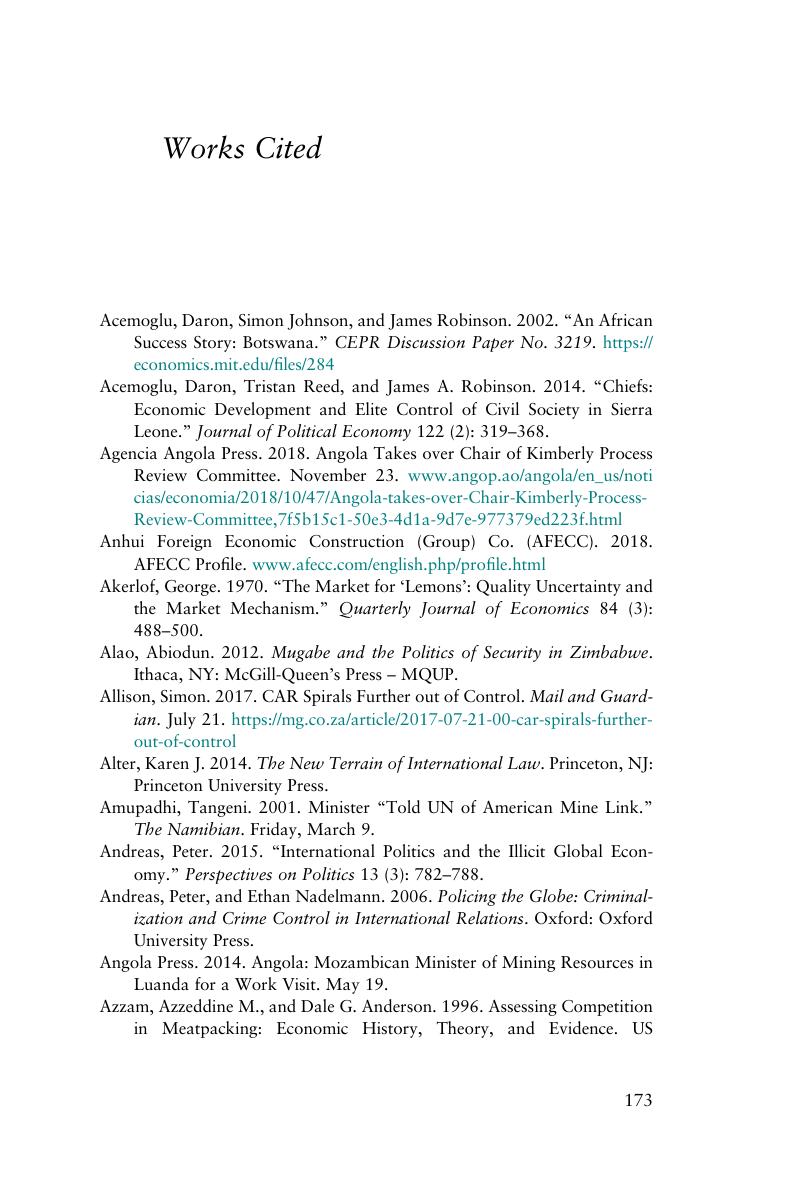Book contents
- The Political Economy of the Kimberley Process
- The Political Economy of the Kimberley Process
- Copyright page
- Contents
- Tables
- Acknowledgments
- 1 Diamonds after Blood?
- 2 The Domestic Political Economy of International Agreements
- 3 From Passiveness to the Presidency
- 4 Diamonds, Dependence, and De Beers
- 5 The One Who Controls the Diamond Wears the Crown
- 6 The Limits of Cooperation after Conflict?
- 7 No Private Companies = No Compliance
- 8 Understanding the Nature of the Kimberley Process and International Agreements
- Works Cited
- Index
- References
Works Cited
Published online by Cambridge University Press: 20 August 2020
- The Political Economy of the Kimberley Process
- The Political Economy of the Kimberley Process
- Copyright page
- Contents
- Tables
- Acknowledgments
- 1 Diamonds after Blood?
- 2 The Domestic Political Economy of International Agreements
- 3 From Passiveness to the Presidency
- 4 Diamonds, Dependence, and De Beers
- 5 The One Who Controls the Diamond Wears the Crown
- 6 The Limits of Cooperation after Conflict?
- 7 No Private Companies = No Compliance
- 8 Understanding the Nature of the Kimberley Process and International Agreements
- Works Cited
- Index
- References
Summary

- Type
- Chapter
- Information
- The Political Economy of the Kimberley Process , pp. 173 - 198Publisher: Cambridge University PressPrint publication year: 2020

